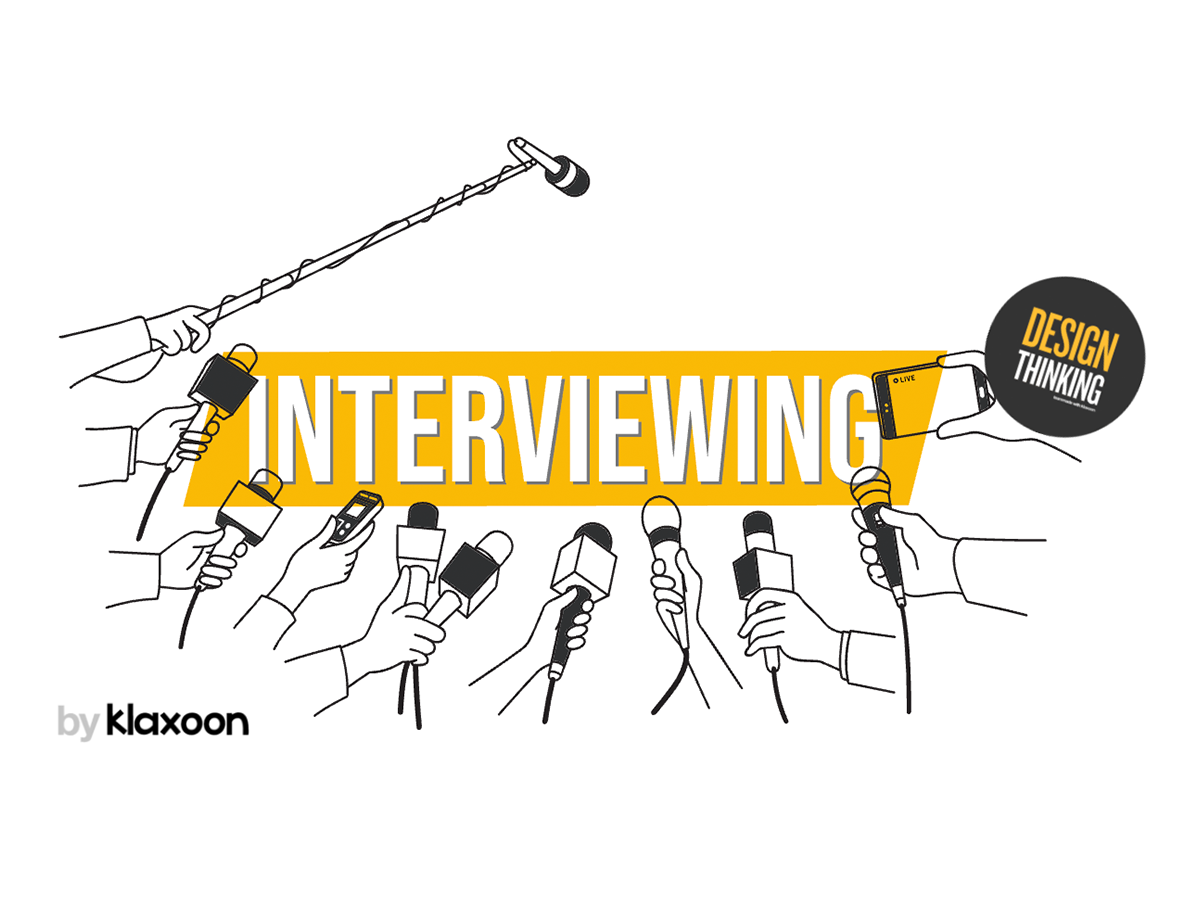Interviewing: a step-by-step guide to preparing and conducting interviews
Published on September 18, 2025
Interviewing: a step-by-step guide to preparing and conducting interviews


Use the “Interviewing” template to become expert interviewers and prepare your interviews as a team. The interview guide is a useful tool for the preparatory phase, which helps to structure the interview and organize information. Use the funnel approach for your questions, working down from the most general to the most specific. Qualitative interviewing requires careful preparation. This method will help you to get to know your customers better and tailor your product or service, through direct communication.
It’s a method most commonly used in marketing, in particular for market surveys. It involves a panel of customers, to get to know them better. The one-on-one interview, covered here, is the most common form and the easiest to organize. It aims to identify customers’ and leads’ points of interest and reservations with respect to a product or service. Qualitative interviews also help identify what criteria lead customers’ purchasing decisions. Qualitative interviews help to outline consumer behaviors. Basic rules for a successful qualitative interview: careful preparation and taking care not to influence the interviewee’s answers.
The advantage of a one-on-one interview is that the interviewee is free to voice their own opinions without being biased by other people’s answers, unlike group interviews. However, the surveyor’s role is pivotal for the interview material to be usable and relevant for the survey.
The interview is an open discussion, where questions must be kept open-ended and not influence the interviewee. They are a guideline for the interviewer but can change according to what is said. Stay focused on the interviewee and on leading the interview, be proactive and adapt to the interviewee’s response and answers. It’s important to sense when the interviewee is holding back, so that you can steer the interview in another direction and leave more room for spontaneity. Depending on the interviewee’s answers, the surveyor can ask them to elaborate and ask more specific questions. Allow some space for the unexpected. You might be pleasantly surprised. Be open-minded about the interviewee’s answers. However, don’t lose track of the key information you’re looking for or you might miss the point. This way, you’ll get objective and genuine information on the consumer’s behavior.
People usually like to talk about their own experience. You must have good relational skills, as mentioned above, and know how to ask the right questions. With well thought-out and prepared questions, you’ll be able to pick up on what consumers want, need, and how they behave… This is valuable information to help you tailor your product, service and your marketing strategy. The “Interviewing” template is a tool complete with instructions that will help you and your team prepare a tailored questionnaire for your survey.
The “Interviewing” template helps you and your team to prepare your interview guide.
Before the interview: meet with the team on the Board (in person or remotely with a Live session, the built-in videoconferencing tool). Identify the subject matter for your qualitative survey. Together, carefully prepare your questions, referring to the template’s instructions if necessary. Then determine the selection criteria for the people that you’ll be interviewing, and identify them. There may be one or more surveyors within the team. If there are several, you can conduct separate interviews at the same time to speed up the process.
The surveyor books an appointment with the people taking part in the survey. Where possible opt for interviews in person, otherwise use videoconferencing. Opt for a quiet environment where you won’t be distracted and interrupted. It’s important to bring with you something to record the interview with. As you’ll only be taking notes, you’ll need a trace of the actual interview for the analytical phase.
The surveyor starts the interview by introducing him- or herself and presenting the aim of the interview. Once the interviewee knows what to expect and has agreed to the recording, start recording the interview.
Roll out your questionnaire, adapting to the interviewee’s answers. Ask the interviewee to elaborate where necessary, but always be careful not to influence their answers. Stay focused on the interview and take notes on the Board, in the dedicated answer space. Remember to thank the interviewees for their time at the end of the interview!
Several qualitative interviews will be necessary to provide enough material for the analytical phase. About a dozen interviews should be conducted to give you a sufficient sample of answers for your qualitative survey. Note that there is another form of qualitative interview, which is a group interview. You’ll find our dedicated template here: focus group.
Get inspired by other templates from the same categories
Unlock your teamwork potential